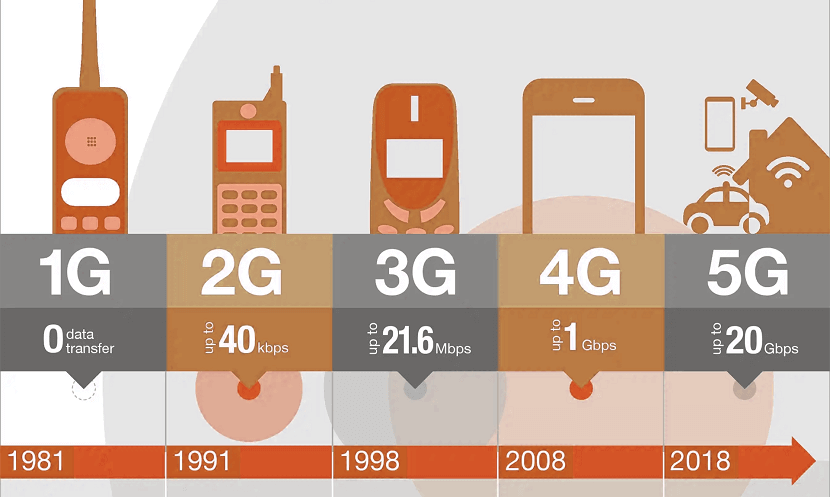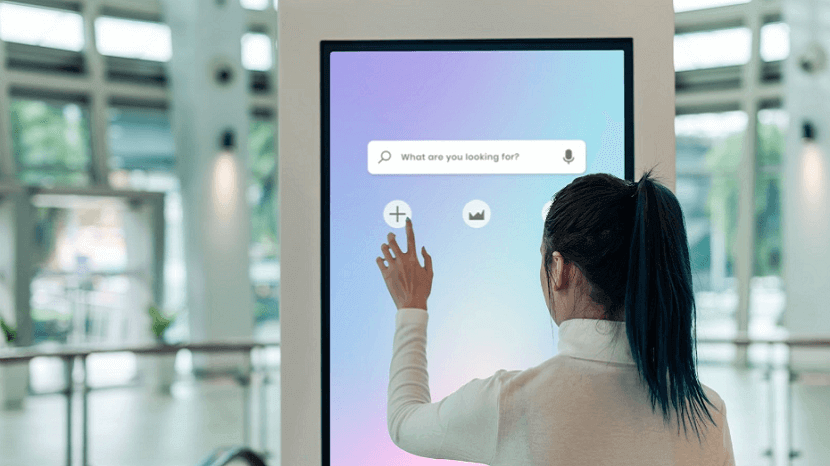
In the constellation of today’s fast-paced digital environment, the essence of engagement has significantly transformed. Gone are the days when face-to-face meetings were the cornerstone of interaction. Virtual engagement has sailed into the spotlight, becoming indispensable across various sectors such as business, education, healthcare, and social connections. Communication, the act of exchanging views or providing an exchange of ideas and information, has been altered beyond recognition due to virtual interaction that allows us to overcome temporal and spatial restrictions.
The most important aspect of backing the efficacy of these digital engagements is the potent technological aspect. Technology and strategy are the answers to elevating the efficacy of these digital engagements. Leveraging technological advancements not only makes the virtual interaction high-quality but also perfects the path of proper and effective communication.
This blog explores the full range of weaponry that has been developed to improve our virtual collaboration. We find out how the fundamental high-speed internet and the choice of a suitable virtual platform intricacies are being followed by wizardly video conferencing software and fun interactive tools. We also unplug the location of the chatbots, the mobile friendliness account for the way these tools interact with the lightspeed rise of smartphones, the VR and AR revolution dramatically enhancing things, the fearsome server precautions, the good karma of the reasonable race for accessibility, and the psychologist’s notebook, which constitutes analytics.
And now – I hope – our digital journey is about to begin, promising to arm you with the knowledge to master the art of virtual engagement.
The Role of High-Speed Internet Connectivity
A high-octane sports car is only as good as the fuel it runs on; similarly, the potential of virtual engagement is inherently bound to the quality of internet connectivity powering it. High-speed internet connectivity is no longer a luxury; it's the lifeblood of today's digital ecosystem. Whether it's a global webinar, a telehealth session, a remote classroom, or a virtual family reunion, stable and speedy internet is paramount.
But how often do we gauge our internet stability or speed? Do we question if our connectivity is robust enough to support the increasingly weighty demands of high-definition video calls or the swift exchange of large data packets? The first step towards improving virtual engagement is ensuring that our connection does not fail at crucial moments.
Here are a few tips to evaluate and improve your internet speed and stability:
- Test Your Internet Speed: Use online tools to test your internet speed, and compare it against the recommended speeds for your intended virtual activities.
- Upgrade Your Plan: If your current internet speed falls short, consider upgrading your plan to meet the requirements of your virtual engagement needs.
- Strengthen Your Wi-Fi: Centralize it in your house as much as possible, make sure it is not surrounded by electronics that could cause data loss, and adopt a mesh network for wider coverage. Similarly, optimize your Wi-Fi.
- Wired Connections: For the most stable connection, consider a wired Ethernet connection which often provides faster speeds than Wi-Fi.
- Limit Bandwidth Usage: Be mindful of other devices and applications that might be consuming bandwidth during important virtual interactions.
We can mainly start by focusing on high-speed internet connectivity, and in all our virtual endeavors, our foundation will be robust, enabling us to move smoothly and productively across our virtual journey.
Choosing the Right Platform for Your Needs
Just as one might select the appropriate venue for a live event, choosing the right virtual platform for your online engagement is critical. The choices are abundant, with platforms designed to cater to webinars, virtual conferences, workshops, or even simple team meetings.
Several factors should inform your platform choice:
- Audience Size: If you're addressing a large audience, you'll need a platform that can handle the crowd without technical hitches.
- Interaction Level: Are you looking for a platform that allows audience participation, such as Q&A sessions, or will you be the sole presenter?
- Accessibility: Regardless of the technical skills of the involved parties, it is essential that the platform is user-friendly to guarantee everyone’s ability to follow the discussion; moreover, all potential disabilities should be considered.
Here's an overview of how to find a platform that aligns with your specific virtual interaction demands:
- Research and Compare: Compile a shortlist of platforms and compare their features.
- Free Trials: Take advantage of free trials to test platforms. This hands-on experience can reveal a lot about suitability and performance.
- Check Reviews: Look up reviews and user feedback to learn from the experiences of others.
- Tech Support: Consider platforms that offer excellent customer and technical support.
- Integration Capabilities: Ensure the platform integrates well with your existing tools and workflows.
Selecting the right platform is like finding the right stage for your performance—it can greatly amplify the success of your virtual engagement.
Video Conferencing Software: Creating a “Near-Real” Experience
The rise of video conferencing software has altered the meaning of connecting. We can now achieve a “near-real” feeling of an in-person experience with the aid of realistic and effective interaction. Your selection of video conferencing software like FreeConference.com is critical; the platform you select will help direct how well or how poorly your meetings or events go.
Key features to look for in video conferencing software include:
- High-Definition Video and Audio: Clarity is crucial. Look for software that offers HD video and clear audio to avoid miscommunication.
- Screen Sharing Capabilities: Sharing presentations or documents should be seamless, enabling participants to follow along effortlessly.
- Recording Functions: Having the ability to record sessions is invaluable for those who cannot attend in real time or for review purposes.
- User-Friendliness: The software should be intuitive for all users regardless of their technical abilities.
- Scalability: The software should be able to grow with your needs, catering to more participants or additional features as required.
Investing time into selecting a high-quality video conferencing software that ticks these boxes will ensure that your virtual engagements are as close to the 'real thing' as possible.
Make it Interactive with Virtual Tools
A higher degree of engagement is facilitated by interaction that encourages participation and feedback during virtual sessions. Several tools and features enable interaction that may be as straightforward as chatbox discussions and as elaborate as collaborative projects.
Factors to consider while selecting your virtual engagement tools include:
- Polls & Surveys: Gather real-time responses from your audience to gauge their understanding, collect their opinions or keep the interaction lively.
- Whiteboards: Virtual whiteboards can be used to note down ideas or explain concepts in an easily visible and engaging manner.
- Breakout Rooms: Some platforms offer breakout rooms where participants can be divided into smaller groups for focused discussions or group work.
- Quizzes & Games: Infuse fun into your virtual engagements with interactive quizzes and games. These can also be used to check knowledge retention in an educational setting.
Remember, the key is not to simply convey information but to engage your audience actively. When participants feel part of the conversation, they are more likely to remain attentive and invested in the subject matter.
Leverage the Power of Chatbots
From customer service to personal reminders, chatbots have infiltrated virtually every digital space. They should be no exception when it comes to virtual engagement. Chatbots can be utilized for things such as automatically repeating the same responses to commonly asked questions or guiding people through banal processes quickly. Chatbots can respond to a countless number of inquiries at the same time, making them ideal for large main virtual engagement platforms.
If you're planning to use a chatbot, focus on the following aspects:
- Natural Language Processing: Ensure the chatbot can understand and respond in a conversational manner to yield a human-like interaction.
- Accurate Information: Equip your chatbot with thorough, accurate information so it can provide helpful responses.
- Machine Learning: Over time, the chatbot should learn from interactions to enhance accuracy and offer better value in future engagements.
Bridge the gap between technology and personal touch with a chatbot that can cater to your participants' needs without placing strain on human resources.
Mobile Optimization: Meeting Users Where They Are
With smartphones dominating our daily communication, any virtual engagement strategy would be incomplete without addressing mobile users. Whether it's attending a webinar, watching a live presentation, or participating in an online workshop, the experience must be optimized for small screens.
Here are a few ways to ensure your engagement is mobile-friendly:
- Responsiveness: The platform or software you use must adjust to different screen sizes without compromising usability and visual appeal.
- App-Based Engagement: If you regularly host online engagements, consider the viability of an app designed to enhance mobile access and ease of use.
- Data Consumption: Be aware of the data footprint of your virtual engagements. If they use excessive data, this may discourage participation from mobile users.
By prioritizing mobile optimization, you ensure access to your virtual engagements anytime, anywhere, broadening your reach and convenience.
The Promise of Virtual Reality (VR) and Augmented Reality (AR)
The realms of VR and AR offer exciting prospects for virtual engagement. With VR, you can host virtual events that offer a highly immersive, interactive experience, creating virtual environments for meetings, concerts, or classrooms. AR can similarly enrich virtual experiences by overlaying digital content onto the real world, making the virtual engagement seem more 'real'.
While VR and AR technology usage in day-to-day communications is still gaining traction, keeping an eye on these emerging trends can ensure you're at the forefront of virtual engagement.
Cybersecurity: Safeguarding Your Virtual Space
As we increasingly turn to virtual settings for engagement, cybersecurity has taken center stage. Just as you would secure a physical location for an event, online spaces require strong protective measures to prevent data breaches, Zoom bombing, or other intrusions.
Here are some ways to ensure safety during virtual engagements:
- Passwords and Encryption: Use robust passwords for your meetings or events, and consider enabling end-to-end encryption if it's available.
- Waiting Rooms: Enable waiting rooms to vet participants before they enter the virtual space.
- Manage Screen Sharing: Restrict screen sharing to only the hosts or designated presenters to prevent uninvited disruptions.
- Frequent Updates: Keep your software and systems updated, as many updates contain security enhancements.
Security measures not only protect you and your audience from unpleasant experiences but also foster trust in your audience, thereby encouraging future engagements.
The Need for Accessibility in Virtual Engagements
Just like physical engagements, virtual engagements should be designed with inclusivity in mind. Participants may have varying needs and abilities that require accommodations, and it's vital that these needs are addressed.
To foster a more inclusive virtual space, there are a few aspects to consider:
- Closed Captioning and Transcriptions: These allow those with hearing disabilities to fully participate in and benefit from the engagement.
- Screen Reader-Friendly Material: Ensure that any shared documents or slides are compatible with screen readers for visually impaired participants.
- Cultural and Linguistic Considerations: For a global audience, consider the cultural and linguistic diversity. Offering translations, or at least ensuring clarity in expression, can go a long way in ensuring accessibility.
Remember, inclusivity leads to a broader reach and a richer experience for all.
Tracking Success with Analytics
To measure the success of your virtual engagements in order to enhance their success, as well as to determine areas that need improvement, it is obviously necessary to measure the success of virtual promotions. This includes measurement of attendance rates, participant interplay, sustainability of the participants, and other key indicators. Most websites have in-built data analysis tools with which a user can determine these factors.
Here are a few metrics that you might like to track:
- Attendance and Drop-Off Rates: This helps understand how effective your engagement was in keeping the audience's attention.
- Participant Interactions: Measures the level of interaction during the engagement. Higher interaction often signals higher engagement.
- Feedback from Participants: This allows you to understand how participants felt about the engagement and gather suggestions for improvements.
Nothing about planning or executing any event is perfect. Tracking the identified metrics can reveal valuable knowledge about what works and what needs to be fixed. As a result, you create a micro-loop for continuous improvement to increase the quality of your virtual events on the whole.
Conclusion
Thriving in the world of virtual engagement requires the delicate balancing act of technology and strategy. From ensuring high-speed internet connectivity to leveraging the power of chatbots, from selecting the right virtual platform to prioritizing mobile optimization and inclusivity, many elements demand our attention. By adopting these strategies and harnessing the power of advanced technology, we can revolutionize our approach to virtual engagement, making it a rewarding experience for all involved.
If you found this article helpful, we encourage you to share it on your social media platforms—because sharing is caring! For more information about article submissions on our website, feel free to reach out to us via email.
Send an emailWritten by RGB Web Tech
Latest Technology Trends
Latest technology trends shaping the future, including AI advancements, blockchain innovation, 5G connectivity, IoT integration, and sustainable tech solutions. Explore breakthroughs in quantum computing, cybersecurity, augmented reality, and edge computing. Stay ahead with insights into transformative technologies driving innovation across industries and revolutionizing how we live, work, and connect.
Related Articles - Technology

What is 5G Network
What is 5G? Learn everything you need to know about 5G technology and how it will redefine communication, entertainment, and the way people connect ...

Employee Monitoring Software
Enhance productivity and security with SentryPC, the top-rated employee monitoring software trusted by businesses worldwide.

Benefits of Accounting Standards
Enhance your financial management with 7 effective strategies to maximize the advantages of your accounting system. Elevate your business today!

Artificial Intelligence Slides
Unlock AI's power in your digital marketing narrative with dynamic slides. Craft compelling stories that captivate your audience.

AI Content Detection Tools
Discover top AI content detection tools of 2024! Enhance security and streamline content moderation with cutting-edge solutions.

Challenges are Associated with Generative AI Testing
Explore the intricacies of testing Generative AI: Uncover challenges in navigating complexity. Decode the hurdles in ensuring robust AI model evaluations.

Role of Data Science in Business Intelligence
Unlock business potential with Data Science! Explore its pivotal role in Business Intelligence & decision-making. Transform data into actionable insights.

Role of Snowflake Optimization in Business Success
Unlock business success in the data revolution with Snowflake Optimization. Navigate data challenges seamlessly for unparalleled efficiency and growth.

AI Tools for Teachers and Educators
Discover 3 essential AI tools empowering educators: From grading assistance to personalized learning, streamline teaching tasks effortlessly.

Common Myths and Misconceptions About ITIL Debunked
Unravel ITIL myths! Discover truths behind common misconceptions. Unveil the real essence of ITIL in this eye-opening debunking journey.

Strategic Sales Insights
Gain strategic sales insights for navigating today's business landscape effectively. Unlock success with actionable tactics and expert guidance.

Enhancing Virtual Engagement Leveraging Technology for Smooth Interactions
Discover how to enhance virtual engagement by leveraging technology for seamless interactions. Boost connectivity and collaboration in your digital spaces.

The Future of Business Messaging Trends and Technologies
Explore the future of business messaging with insights on emerging trends and cutting-edge technologies shaping communication and collaboration.

Transforming Retail Spaces with Interactive Digital Signage
Revolutionize retail with interactive digital signage: enhance customer engagement, boost sales, and create immersive shopping experiences.

Unlocking User-Centricity with Generative AI
Explore how generative AI is transforming user-centric design, enhancing personalization, boosting engagement, and revolutionizing digital experiences.

Exploring Python Through Mobile Applications
Power of Python on the go! Learn coding, build apps, and explore Python programming through innovative mobile applications.

How an AI to Human Text Converter is Revolutionizing Communication
Discover how AI to Human Text Converters are transforming communication with natural, engaging language for businesses and individuals.

Benefits and Risks of Using API for Crypto Trading
Benefits and risks of using APIs for crypto trading, including automation, efficiency, security concerns, and market volatility

Top Benefits of Omnichannel Contact Center for Agencies
Discover how an Omnichannel Contact Center enhances customer satisfaction, streamlines communication, and improves efficiency for tech and digital agencies.

Revolutionizing Customer Support with Call Center Software
Discover how call center software enhances customer experiences, streamlines operations, and fosters innovation in the ever-evolving web industry.

Boost Scalability with CCaaS for Growing Businesses
Discover how CCaaS enhances scalability, enabling businesses to handle rapid growth, improve web performance, and optimize operations effortlessly.

Enhancing Web Tech Solutions with Contact Center
Discover how a contact center improves web technology, creating seamless, customer-focused solutions that enhance user experience and satisfaction.

Boost Customer Retention with Omnichannel Contact Center
Explore how an omnichannel contact center enhances customer retention for web-based businesses by delivering seamless and personalized experiences

Differences Between Nearshore and Offshore Java Application Outsourcing
Discover the key differences between nearshore and offshore Java application outsourcing, including cost, communication, and time zone benefits.

Innovative Ways AI is Transforming Everyday Life
Discover how AI is revolutionizing everyday life, from self-driving cars and healthcare robotics to smart homes and energy optimization. Explore real-world AI applications driving change.

How to Set Up Your Own WhatsApp Chatbot in Minutes
Learn how to set up your own WhatsApp chatbot quickly and easily in just minutes! Streamline communication and boost engagement effortlessly.
“Technology is best when it brings people together.” — Matt Mullenweg
